Day in the life: CERN cafeteria
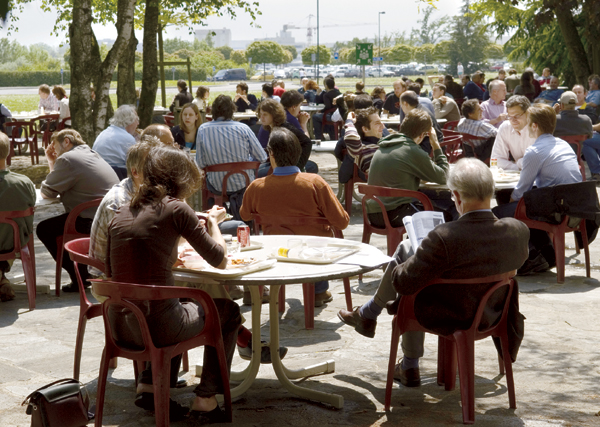 |
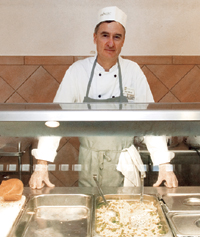 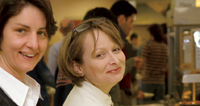 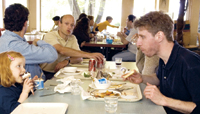 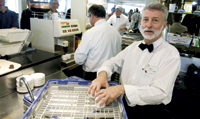  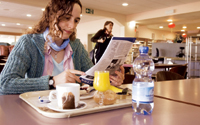 |
Mario Zanolini, CERN's Maître d'Hôtel, began working in the cafeteria in 1968. Walk into the main CERN cafeteria at various times of the day and you'll find different scenes: scientists discussing results over coffee; a parent coaxing his children to finish lunch before swooping them back to the nursery school on site; groups of grad students soaking up the sun on the outdoor terrace; a solitary scientist working on her laptop; and, of course, hungry physicists grabbing breakfast, lunch, dinner, or just a snack before heading back to work. "People meet here from the four corners of CERN, take a coffee and discuss a new project, or maybe just talk about American football or cycling." Open every day from 7 a.m. until midnight, the cafeteria serves an average of 1500 people, who eat through more than 60 kilos of bread (about 130 pounds) and anywhere from 300-400 kilos (660-880 pounds) of fish and meat each day. In the cafeteria, considered the primary of the three restaurants on CERN's grounds, you can get anything from a plate of salad to a glass of beer. VIPs and VVIPs, such as visiting political leaders and royalty, dine there, too, in a window-filled room referred to as the "glass box." "We are open all the time except for Christmas and Easter." But it's more than just a place to eat. Ask about the history of CERN's experiments and discoveries, and many scientists will pinpoint the origins to the cafeteria. The concept for the Low Energy Antiproton Ring (LEAR) started with a discussion there. It was where Tim Berners-Lee and Robert Cailliau decided on a name for the World Wide Web. And one physicist even wrote a paper, published in Nature, about the mathematics involved in the stability of the cafeteria's four-legged tables on the uneven outdoor terrace. Now the question is: Will the LHC discoveries come during a cup of coffee, or a cup of tea? "All kinds of people pass through the restaurant: kings, physicists, Nobel Prize winners, and people like you and me."
|
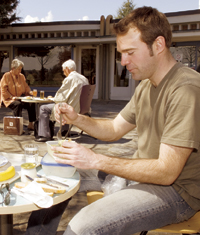  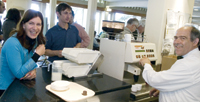 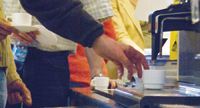 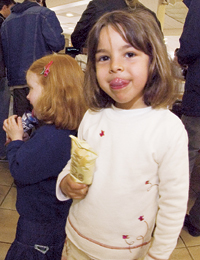 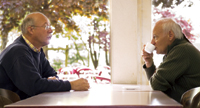 |
Click here to download the pdf version of this article.






